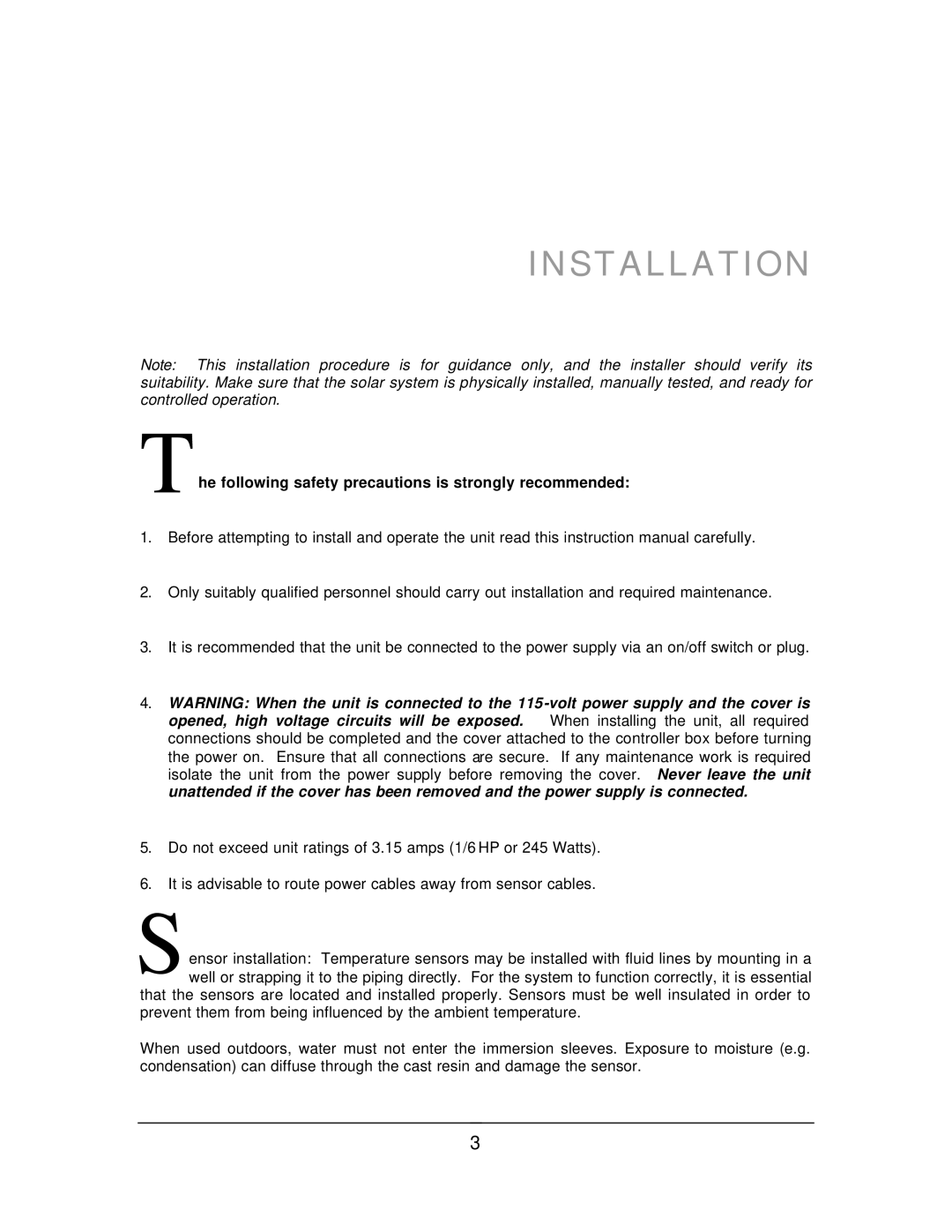INSTALLATION
Note: This installation procedure is for guidance only, and the installer should verify its suitability. Make sure that the solar system is physically installed, manually tested, and ready for controlled operation.
The following safety precautions is strongly recommended:
1.Before attempting to install and operate the unit read this instruction manual carefully.
2.Only suitably qualified personnel should carry out installation and required maintenance.
3.It is recommended that the unit be connected to the power supply via an on/off switch or plug.
4.WARNING: When the unit is connected to the
5.Do not exceed unit ratings of 3.15 amps (1/6 HP or 245 Watts).
6.It is advisable to route power cables away from sensor cables.
Sensor installation: Temperature sensors may be installed with fluid lines by mounting in a well or strapping it to the piping directly. For the system to function correctly, it is essential that the sensors are located and installed properly. Sensors must be well insulated in order to
prevent them from being influenced by the ambient temperature.
When used outdoors, water must not enter the immersion sleeves. Exposure to moisture (e.g. condensation) can diffuse through the cast resin and damage the sensor.
3
